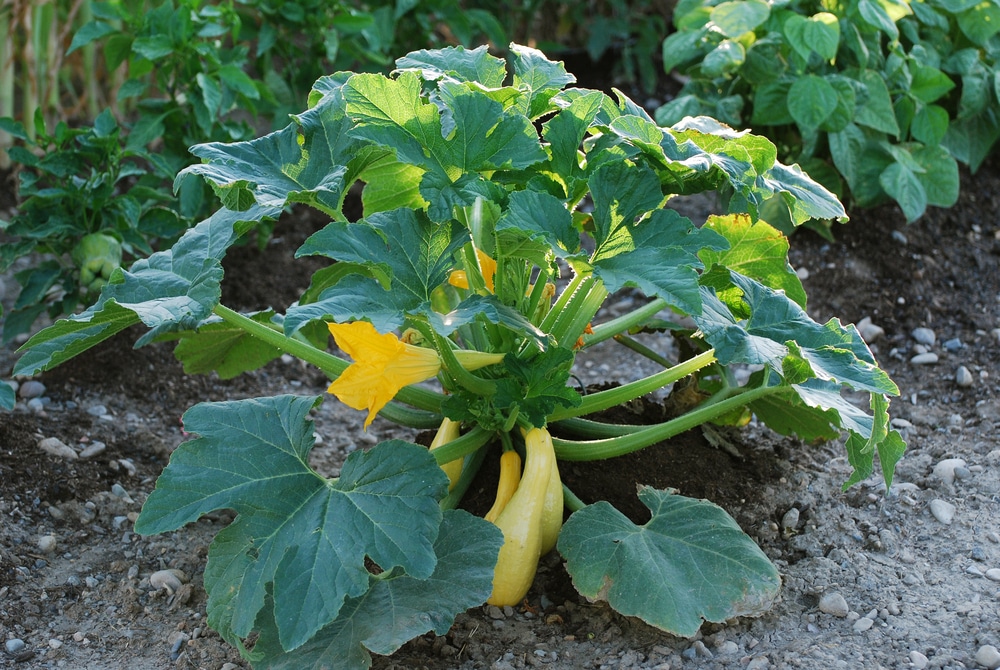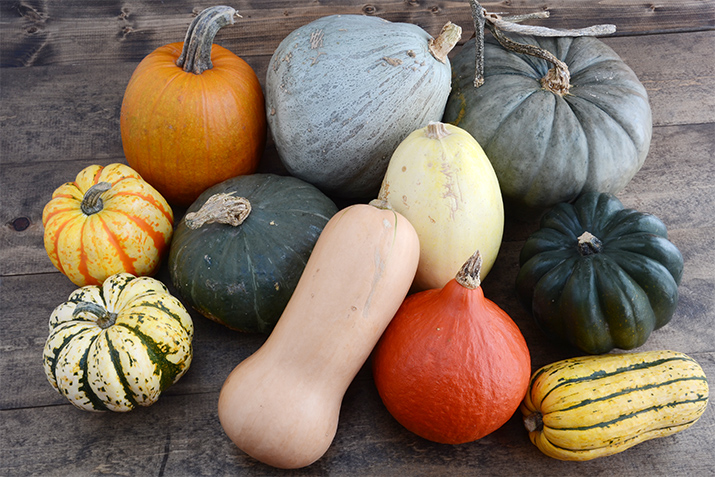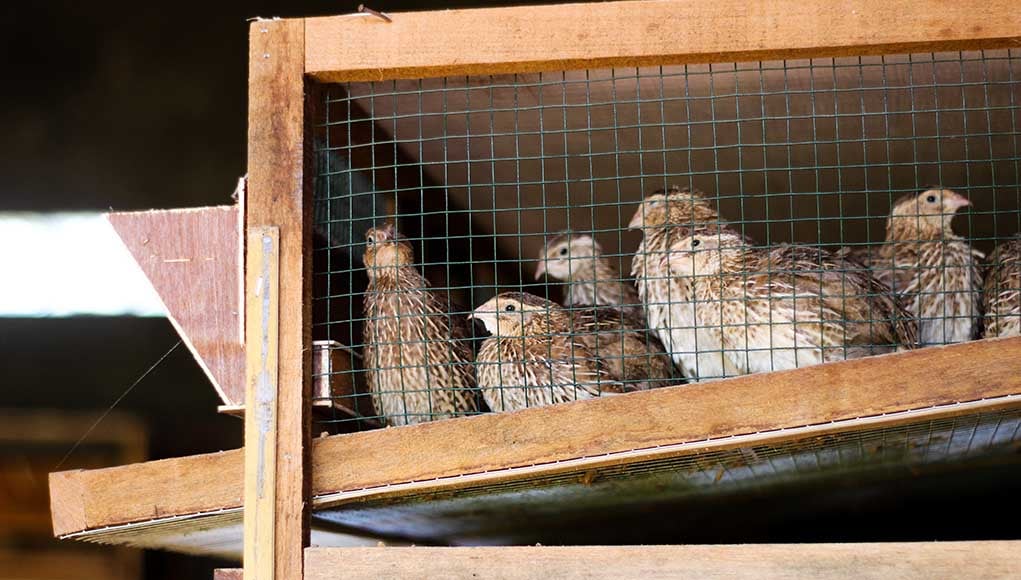I know typically I’m trying to sell you food–or, more often, you’re calling me looking for food I don’t have for sale–but this post is going to veer away from that relationship of me being the supplier and you being the consumer. I want you to grow food, and I’m encouraging you to do it now. Today.
My original intent in starting this farm, aside from creating a job for myself and providing some food security for my family, was to serve as a model for other people to do the same. It’s been slow going, as each improvement I undertake seems to uncover a dozen new obstacles, and so I regret that, aside from the chicken butchering workshop in October, 2020, I haven’t been able to offer any classes, such as on gardening, foraging, wilderness survival, raising animals, and so on. That’s still in the works, but I find myself wishing right now that I’d already been training people for the past year or two.
The reason, frankly, is that it’s going to get a lot harder to buy food later this year, and right now, you still have an opportunity to grow some that will be ready to harvest just as things start to get bad.
This isn’t a sales pitch. I’m not selling you freeze-dried food or classes on surviving a zombie apocalypse or anything. This is about my concern for the people in my community, and also just pure self-interest. I’ve long believed that the best security is well-fed neighbors, and it looks like, in the not-too-distant future, a lot of my neighbors might not be so well-fed.
Let’s review how we got here.
When things locked down in 2020, the hospitality industry nearly ground to a halt. A lot of restaurants closed or did carry-out only. Amusement parks, hotels, cruise ships, casinos, a whole, huge industry of feeding people who were out enjoying themselves suddenly shut down, and the food system that supplied them was stuck holding the bag. Food processing factories, including many meat-packing facilities, shut down, many simply because they didn’t have the staffing to stay open after so many workers got sick. The abattoirs that remained open had long waiting lists to schedule a slaughter. That’s not compatible with the way meat is raised for market. You plan a slaughter date when you get an animal, so that you’re not feeding it a day past when it reaches market weight. Otherwise, you hit a point of diminishing returns, where you end up spending more to feed the animal than you’re going to make by selling it. With no one to process the food, a lot of crops and livestock herds were simply destroyed, because it was cheaper for farmers to cut their losses than to pay for storage, preservation, or keeping animals alive. Shipping got backed up, so even the food that was still available often didn’t make it to store shelves in a timely manner.

But we didn’t starve. Here in America, at least, most of us still had access to food. Stores started delivering and offering free curbside pickup for online orders. They might not have had your favorite flavor of ice cream or your favorite cereal in stock (for some reason, alfredo spaghetti sauce was particularly hard to find that year), but they had something to fill your belly. We just had to deal with occasional substitutions and the unsettling sight of a lot of bare spots on the grocery shelves. And prices that started creeping up.
There were also wildfires and floods were putting a lot of farm land out of production, at least temporarily. You didn’t immediately see the effects of this in the stores, but it hit farmers. Farm land out of production meant scarcities of hay and grain a few months down the road. Scarcities of animal feed meant that what was available got bought up locally, or farmers kept it for their own use, rather than selling it for national distribution. Feed prices started climbing. Depending on the region and what sort of feed you’re looking for, I’m hearing reports of increases of anywhere from 50% to 400% for animal feed.
It hasn’t hit me quite as hard, because I’ve tried to become a lot less reliant on store-bought feed. Now that it’s summer, my goats mostly eat browse and grass that grows wild, but even so, I’ve cut back to just keeping breeding stock. I killed two of my goats this spring to feed my family. I don’t have to feed the chickens store-bought feed everyday, because I pick up discarded bread and vegetables from restaurants, but I do still buy layer feed and corn. It’s gone up about 50%. If I can get things together to start raising black soldier fly larvae or some other sort of insect larvae (mealworms, etc.) or earthworms, I’ll use that for chicken feed. But that’s only good for as long as the weather stays warm. I tilled up a couple new garden plots and planted them with corn, beans, and squash with the intent that some of it will be chicken feed. I already know it won’t go far, especially if we end up eating most of it ourselves.

If, later this year, it gets to the point that I can’t afford to feed all my hens (and one rooster), I’ll sell some off. And if I can’t find buyers (though I suspect there will be demand), we’ll just eat them. I’ll keep enough to supply my own family with eggs and to hatch more chicks in the spring, but that would mean that I wouldn’t have any eggs for sale until possibly Autumn 2023.
Compounding the problems we already had from the pandemic, the lockdown, and natural disasters is the war in Ukraine. A lot of people don’t realize, but Ukraine and Russia together supply much of the food consumed by Europe and Africa. And with people in those places not getting that food, they’re looking to other countries, which is driving the cost of food up worldwide. Russia is also a major supplier of urea, which is used in the manufacture of both chemical fertilizer and DEF, a fluid used by modern diesel trucks. Less fertilizer means fewer crops planted, and price increases on the remaining fertilizer. Price hikes on remaining fertilizer mean those crops will cost more. Fewer crops being planted will also drive up the price of the crops that are produced. And less DEF means fewer trucks on the road, which means supply disruptions again and increased shipping costs, which drive up the price of everything.
In a nutshell, I’m saying that as much as food prices have gone up–and I know a lot of that is due to inflation and price gouging by corporations–they’re going to go up even more, at least in part because food is going to get more scarce worldwide. I haven’t been following the markets in the global south, so maybe there’s some hope to be found there, but so far, it’s not looking good. The poor will bear the brunt of it. Already, I’m hearing stories about parents who skip a meal so their children won’t have to. I’ve been ignoring doctor’s orders to change my diet lately because eating fresh vegetables and seafood every day just doesn’t fit into our household budget, but I’ve got little protein factories in my hen house cranking out cholesterol bombs every day. Statins are cheaper than shrimp, and carbs are still affordable and available, even though the pickings on the store bread shelves are sometimes thin these days.
There’s still plenty of meat at the store right now, but prices are through the roof, and the supply isn’t going to last. Predictions are that we’re going to see a dip in the food supply and consequent price spike around August/September. As the growing season ends and we’re forced to stretch out the year’s reduced harvest, prices will only climb from there.
Furthermore, rumblings from Washington are that the Fed’s plan for getting inflation under control is to raise interest rates, forcing companies to scale back and lay off workers. I’ve heard the target is 10% unemployment, the idea being that this will cool off demand enough that it’ll put the brakes on the falling value of the dollar. Of course, for those people losing their jobs, that means that they’re going to find themselves without an income at the very same time that prices are already out of reach. It seems that some degree of hunger will be unavoidable.
I’m not telling you all this to scare you. I’m telling you so you can take steps now to make sure you have food. Sure, you could hoard canned food (if you have the funds and time to do that now), but because of the multiple factors all having a domino effect, this situation is expected to persist for the next few years. Your stash won’t last. We need to step up production and become less dependent on grocery stores and restaurants to feed us.
So what are you supposed to do? Start planting. Here in Columbus, the first frost date is predicted for October 9th. That gives you 104 days. Stores have their seeds on clearance at this point. I haven’t checked lately, but they may be marking down their live plants, too, now that June is coming to an end. What can you grow in 104 days?
Well, let’s start with what you can’t grow in that time. Umm…I wouldn’t bother planting peppers from seed at this point. You could still do most varieties of tomatoes, but you’re going to get a better harvest if you start with plants rather than seeds. If you do grow tomatoes or peppers, look up “season extension” for tips on how to protect your plants from the cold this fall to try to stretch out the harvest window a little longer. But that’s if you plant today. If you’re going to put it off for a few weeks, just forget about these long-season crops.
Also forget about tree fruit. The best time to plant a fruit tree was five years ago. I’m not saying you shouldn’t plant a fruit tree now. I’m just saying that it’s not going to feed you this year (or next year, nor the year after that), so maybe that’s not worth the space if your growing space is scarce. Grape vines and any fruit bushes will take a few years, too. Raspberry and blackberry canes might produce for you next year (or the year after), but you’re not going to get anything off them this year, and that’s what we’re focused on–food in your pantry this fall to feed you through the winter.
And to be clear, I’m under no delusions that anyone reading this is going to be able to feed themselves well entirely on what they grow in their own yard in the next hundred days. But you’ll grow some, and the more you can grow, the fewer groceries you’ll have to buy. If things get so bad that you have to start limiting your portions, I’d rather you had as much food on hand as possible.
I also wouldn’t waste time with lettuces or radishes–not because there’s not time to grow them. Indeed, they’re some of the fastest crops you can grow. When I was doing a CSA, radishes and arugula were my lifelines, because you can crank those out in four weeks. Sprouts and microgreens are even faster. So why do I say they’re a waste of time? Because we’re talking about survival gardening here, not what you can sell to Whole Foods shoppers for the best money. You need maximum calories, vitamins, and minerals (mainly calories) in the least space possible in the time available.
Other than corn, I wouldn’t bother with any grains right now. Some are fussy about the season they’re planted in (and now isn’t the time for any of them), and some just take too darned long. I also wouldn’t recommend alliums right now. It’s not that they take so long. They’re just really particular about timing. Hardneck garlic gets planted in the fall and harvested in July. Onions need a certain number of hours of daylight, and different varieties have different requirements, so they’re fussy about both timing and latitude. Better to save that experiment for next spring when you can get them in early. Maybe you could grow green onions or leeks, but I have no experience with them, so I won’t offer any advice there.
The first thing I’d point you toward are root crops, particularly potatoes (okay, technically a tuber rather than a root). But you won’t find potatoes among the seed packets in the store displays from Burpee and Ferry-Morse. So how do you plant potatoes? Start with old potatoes, preferably ones already sprouting eyes. You can buy “seed potatoes” in garden centers (probably not at this late date), but contrary to what a lot of people will insist, you can also grow them from regular ol’ taters from the produce section at the grocery store. Like I said, ones that are sprouting because they’ve already been sitting around in the dark for a few weeks are better than the freshest ones without a blemish on them. You can just plant these whole, or–to make them go further–you can cut the sprouting potatoes into chunks (this process is called “chitting”) so that each chunk has at least one eye. If you don’t know what I mean by an “eye,” see the picture below:

The bigger the chunk, the more energy your potato plant will have to get started until it grows leaves. Another cool thing about potatoes is that you don’t have to dig deep to bury them. You can just lay them on the ground, provided you have plenty of dirt, compost, sand, straw, or whatever to pile on top of them. You can grow them in containers, but in my experience, they do much better if they can send roots into the soil below. Bury, water, and wait. Astonishingly quickly–like in maybe just a few days–you’ll see green plants poking out of the ground. As these grow, you’re going to want to pile more dirt or compost or whatever around the base of the plant, actually burying some of the stem. This allows the potatoes room to grow without being exposed to the sun. Sun is good for the leafy part, but bad for the part you eat. It’ll turn that part green and inedible, so keep it buried down in the dark.
What about sweet potatoes? Maybe if you’re really desperate for sweet potatoes and you already have slips (sprouts) on hand. Otherwise, it’s iffy. They take 90 to 120 days. You have 104…maybe. Now, it could be that you have some slips ready to go, so you put them in the ground today, and come first frost, you dig them up and have sweet potatoes. But they’ll probably be small, unless they’re an early-maturing variety. I believe I heard that sweet potato leaves are edible (DON’T eat the leaves of regular potatoes, as they are very toxic!), so maybe the crop wouldn’t be a total loss if you grow big vines and not much tuber. (Are they even tubers? Corms? Rhizomes?) But I’ve never eaten sweet potato greens, so I can’t comment on whether that’s worth doing.
Next after potatoes, I’d say grow beets. You can plant them from seeds and they’re ready in 7 to 8 weeks (like a meat chicken or a duck!) The roots are high in sugar and you can can them (preserving them in jars), and the tops can be cooked as greens. Turnips are good, too, but lack the sugar of beets. They taste a little cabbagey and don’t have as big of a fan club as beets or potatoes.

Then I’d recommend carrots. Carrots are another fast, sweet (high-calorie) crop that stores well. The reason I didn’t list it higher (say, before turnips) is because they can be hard to sprout, especially for a beginner. They require a long period of high moisture to sprout. There are lots of tricks you can learn on YouTube about putting them under a board, under glass, pre-soaking, yadda yadda, but since this is “Gardening When It Counts” and not just a puttering around for a hobby, I’d hate to see you waste your time and hope on something that might be stubborn and just lie dormant until next spring.
Something you might try, if you have the space to spare, is buying a bunch of carrots with green tops on them from the store, cut off the tops so they have about an inch of the orange root still attached, and plant those tops (burying the attached root). Go ahead and eat the part of the root you cut off. The plant should grow. It might be a funky looking thing with lots of little carrot tentacles instead of a single, straight taproot, but if you’re eager to grow carrots and aren’t sure about growing them from seed, this might be an acceptable backup plan.

My next recommendation would be beans. Dry beans might still be cheap enough in the store that it’s more cost effective just to stock up (same with flour or whole grains like rice and popcorn), but they are nutritious, they are a good source of protein if you can’t raise animals, and they do grow very quickly. I think it’s about 50 days for most varieties. Maybe you can even squeeze in two crops, depending on the variety. You can eat some varieties as green beans while the pods are still fresh, or you can let them dry (even green beans) for soups. Also, beans take nitrogen from the air and put it into the soil, where it can be used by other plants. Pole beans are sometimes planted in corn patches where they climb up the corn, because the corn needs lots of nitrogen, and the beans give it to them.
To round out the “Three Sisters,” grow squash, if you have the room. Summer squash (like zucchini or yellow squash) is a bushy plant that leafs out from the center to a diameter of maybe four feet or so. The first fruits are ready in about 60 days, and they keep on producing–I’d like to say “until it gets too cold,” but around here, it’s usually more like “until the squash borers or powdery mildew kill them.” Like green beans, this is a plant that will grow food continuously, not just once. Chop up the squash for a stir fry, slice it for ratatouille, or dice it up and use it to bulk up a pasta sauce.

Winter squash takes longer (there’s still time for some varieties, but they’ll probably be small). This includes pumpkins, butternut squash, acorn squash, turban squash, blue hubbard, and so on. These are some of the sweetest things you can grow in your garden in this amount of time, and most of them keep really, really well, as long as you keep them from freezing. Like, you can pick a butternut squash this October, put it on your shelf, and by January, maybe April, it’ll still be good. (If you find it’s getting mushy in spots, just throw it to your chickens…or worms, if you don’t have chickens.) These are sweet enough to be eaten as a dessert, yet can also be a savory entree when seasoned right. Roast them in the oven and eat as-is, or blend them for soup or pie filling.

I’m going to wrap this up here, because it’s already 5:00 a.m. and I’ve had no sleep yet, and there’s a lot of work to do, but I don’t want to put off publishing this any longer. I’m sorry I didn’t warn you earlier or get a chance to show you in person how to do all this, but you can do it. There are more how-to gardening videos on YouTube than you could probably watch in a lifetime. Just don’t get so bogged down watching them that you let it keep you from actually working in the garden.
“But what if I don’t have room for a garden?” Do some googling and find where there are community gardens you can participate in. If you’re in Columbus, you’re probably within walking distance of one. If not, grow in containers. If you don’t have a porch or a stoop where you can leave some buckets or flower pots, mount some shelves in front of sunny windows.
Oh, if you really want leafy greens, like I said, don’t mess with lettuce. It’s not worth it. Try kale. Super-rich in vitamins and minerals, if not calories. Ready in 55 to 95 days. Chop it raw for salads, cook it as greens, toss in a soup or stew, or roast it as kale chips. Kale will live through the winter and start growing again in the spring. You can pull a few leaves at a time off for eating and let them grow back instead of chopping off the whole plant, as you would a cabbage.
Cabbage is 60-100 days, just slightly longer and still within our window. It’s not as nutritious as kale, but it keeps well, especially if you turn it into kraut or kimchi. But that little volleyball-size head you see in the store? That’s the center of a huge plant with giant leaves spreading out to a diameter of three or four feet. And it just feeds you once.
And here’s some advice that I almost certainly won’t follow myself, because I’m a squishy-hearted wuss, but it may be of value to you: raise rabbits for meat. They eat grass. You can literally put them in a cage out on your yard (protected from dogs, please), and they will feed themselves on the grass that sticks up through the bottom of the cage. Move them often enough that they don’t run out of grass to eat. You can pick leaves off maple trees, pick dandelions and many other weeds, and they’ll turn that into meat. They don’t crow, they don’t cluck, they don’t honk or quack. If they make any noise at all, it’s generally just sniffing or quiet grunts.
In Columbus and most surrounding cities, you have to jump through a load of hoops to be allowed to raise chickens, and it’s typically not cost effective if you’re playing by their rules. But a bunny is just a pet, right? (Same for guinea pigs, actually, which are considered a food animal in some parts of South America.) You don’t need a license to have some pet bunnies.

Franklin County (if you’re in the townships instead of an incorporated city or village) does regulate how many rabbits you can have along with chickens and ducks, based on how much land you have, if you have less than five acres. But how are they going to know? You can raise rabbits in your house. I’ve done so. The first time I raised rabbits (and the only time I raised them for meat), I lived in a second-floor apartment and had three cages stacked in my bathroom. Nobody knew, because they’re silent. It’s like raising goldfish. Nobody will know unless you tell them, as long as you clean up after the buns well enough that their cages don’t stink. Yes, I’m telling you to break the law and violate the terms of your lease, if necessary. Blind obedience to pointless, unenforceable, authoritarian rules is not going to feed you and your children this winter. I’m not a lawyer, I’m an urban farmer. I’m telling you how to grow food right where you are. If some official tries to prosecute you for feeding yourself, you get ’em right back for malicious prosecution on the grounds that they’re trying to starve you to death.
Counting cages, water bottles, feed dishes, etc., you can get started breeding meat rabbits for under $100, especially if you get used equipment. From breeding to birth is only about a month. A mama rabbit will typically have like 4-8 babies, but may have as many as 12 (they might not all survive). And then in just two months–like a duck or a meat chicken–those babies have reached a slaughter weight of about 2-4 pounds, depending on the breed. You can modestly expect a yield of 15 pounds of meat every three months per breeding doe (female rabbit). Culinarily, just treat them as a chicken that’s all drumsticks and wings. They are very possibly the best urban livestock. They’re quiet. You can raise them entirely indoors (if you’re bringing them feed, obviously). Their droppings, when dry, can go directly onto your garden or flower bed without having to compost them first, and they don’t smell (their urine does). The only reason I don’t raise them anymore is because I think they’re too cute and cuddly to kill. I’ve done it and I found it upsetting enough to cause me to lose my appetite, so I don’t bother. And I don’t need to start again because I already have chickens.
The only other real downside to rabbits is also a plus, under other circumstances. Rabbit is a very lean meat–so lean that people who’ve tried to survive in the wild eating nothing but roasted rabbit have suffered “rabbit starvation,” a fatal condition caused by a diet deficient in fat. If you’re going to eat rabbit meat regularly, try to cook it in some oil or at least eat some nuts or pumpkin seeds.
Similarly, if you have a garage or some sheltered, private space, you can raise coturnix quail in cages for meat and eggs. They’re basically like teeny, tiny, little chickens, except that they don’t make chicken noises. They aren’t silent, but to anyone who doesn’t know what they’re hearing, they just sound like songbirds you hear chirping all over the neighborhood. I’ve never raised them myself, but I’ve known a couple people who have and visited their operations. Both of them were in town, with neighbors close by. If you can keep parakeets, I don’t see how they’d justify saying you can’t have quail. Unfortunately, I don’t know where you can get quail cheaply. The hatchery I usually get my chickens from, Meyer Hatchery, only offers coturnix as hatching eggs for $3.36 – $6.00 per egg.



